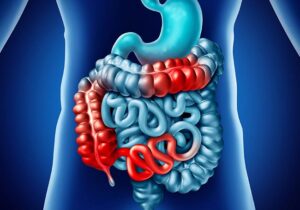Borderline personality disorder, better known as BPD, affects about 5% of the global population, as Dr José Luis Carrasco, who leads the Borderline Personality Disorder (BPD) Unit at Blue Healthcare, explains.
Over the years it has frequently been a misdiagnosed disease, confused with other psychopathologies such as bipolar disorder or depression, among others. It is a relatively new pathology, rarely talked about in the old worlds of Psychiatry and Psychology, which requires specific and novel forms of treatment.
People who suffer from this disorder are seemingly normal individuals but they suffer greatly inside, making them socially dysfunctional with chaotic interpersonal relationships. But why do people suffer from BPD? These are people who suffer great emotional and psychological instability, which causes them to have continuous outbursts of rage, isolating them socially.
In addition, BPD sufferers have very fragile self-esteem, which makes them very sensitive to criticism and rejection. This in turn can lead to deep states of depression or make them feel that they are not valid and that life is meaningless.
Their interpersonal relationships are poor and normally they form excessively dependent relationships with their closest relatives or partner.
They are tremendously impulsive and often unable to uphold a firm commitment, which can lead them to regularly abandon studies and jobs.
A patient who suffers from BPD experiences intense suffering inside, but usually he or she will not ask for help. Self-destructive behaviour and suicide attempts are common. Some, unfortunately, succeed.
However, Dr. Carrasco says that with proper treatment, which combines psychoactive drugs and psychotherapy, these patients can move forward and lead a normal life.
The first signs of the disease usually appear in adolescence, which is when the personality is forming, with the first manifestations of excessive anger, aggressiveness, violence, sudden emotions, emotional collapse and high environmental sensitivity. It is possible that BPD is confused with immature behaviours which are typical of the age group. However, we must look further.
Comorbidity with other disorders is common. Thus many patients who have BPD also present other pathologies such as eating disorders, mood disorders or addictions. It is common to meet people who have BPD who abuse cannabis, alcohol or other substances.All this further complicates the diagnosis.
As we’ve seen, BPD is a relatively new disease that, not so many years ago, was not identified as a disease and was not given a name. Sufferers were simply rebellious, angry, annoying individuals, who behaved badly, used drugs and sought care in a moment of despair. The diagnosis is not simple for any Psychiatry professional. This is the reason why many undiagnosed people have ended up in jail, taking their own lives or having serious problems with the law.
Dr Carrasco says that in reality they are hypersensitive, very vulnerable and many of them have big hearts. «It is necessary to know how to reach them and understand what is going on inside, to connect with their vulnerability,» says the doctor.
If there is someone you know who may have BPD, at Blue Healthcare we have the best team of professionals to help them, led by Dr Carrasco, also a Professor at UCM (Complutense University of Madrid).






